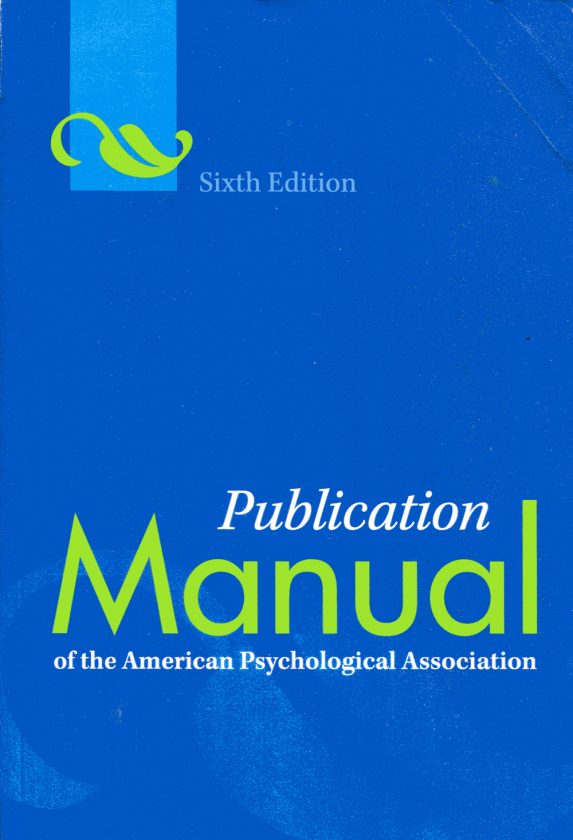Write Now: With Scholarly Writing, Different Style Guides Are Valuable Tools
- The MLA Handbook.
- The APA Publication Manual.

The MLA Handbook.
Have you ever written about literature?
At some point in your academic years, you probably have written about literature without really knowing that you wrote about literature. And you probably created a nice paper trail.
At many universities and colleges, there are courses in English departments labeled Writing About Literature.
What that means is you need to close read the literature and then write a scholarly paper in response to a prompt or question. Now, if you read and understood the material, you would have no problem writing a 500- to 750-word paper. Sometimes, it’s enough to cut material from your paper because you would get off topic. Other times, it’s a struggle because you may think you don’t have enough material.
STYLE

The APA Publication Manual.
Depending on the topic, scholarly writing can prove to be more difficult.
And, as you progress through the higher-numbered courses, the more you will write.
A lengthy research paper will require a thesis, and a paper of such a length will require a works cited page plus several in-text citations. So, to warm up, shorter, response papers are usually assigned. These can be anywhere from 250 to 500 words which translates to one to two pages. Your main source is the text, story or book that was assigned for your paper. It would make sense to try to get at least three other sources to bolster your argument. The task can be easily done with the Internet. Ah technology, before the Internet and search engines, you would have to go to a section in the library that housed periodical collections where magazines and other periodicals would be in bound books, and you would have to manually flip through them to find an article that would support your work. That task is very time-consuming, but very essential because it teaches you how to do actual research.
Then it is incumbent on you to retrieve the article title, magazine information, and create a citation.
With the Internet, that work has been cut by 75%. You can find an article online, make a PDF of it for future reference, and then find out how to cite your source. In high school, English Language Arts students will be introduced to Modern Language Association, MLA, style, and in college English and literature courses, students will be expected to use MLA style, and potentially lose points for not following MLA style. In college, in other courses of study, students may be asked to follow American Psychological Association, APA, style and the Chicago Manual of Style. Like MLA, both APA, and Chicago have style books. Some college professors require students to purchase style books for references. The good thing about purchasing a style book is that you don’t have to purchase it for every class. For example, if you would purchase the “MLA Handbook for Writers of Research Papers” for one writing class, you would not have to purchase it for another class even if the professor put it on the list for texts because some students may not own a copy. And if you are an English major in college, that is one text that you want to keep with you — always. You will always be using it to see how to cite text. It’s an invaluable tool. If you choose to enter the journalism field, then you will certainly acquaint yourself with “The Associated Press Style and Handbook” or known as the AP Stylebook. I use the AP Stylebook every day. It gives reference on proper style for journalists. For example you will see in the newspaper the word adviser is spelled with an “er” and not “or” because that is how The AP wants it spelled. It’s not just The Post-Journal that adheres to AP Style, but several other newspapers across the United States. Some newspapers have their own style guides as I have on my desk an old “Los Angeles Times Stylebook.”

Of course for fiction, there are not really any style guides except for, maybe, grammar. In fiction you can casually break grammar rules, but for scholarly writing it’s very rarely tolerated unless you are making a specific argument in your paper. At that point, you would have already explained the rule that you broke to illustrate your point.
CLOSE READING
Close reading requires students to interact with a text. According to We Are Teachers, weareteachers.com/what-exactly-do-we-mean-by-close-reading-anyway/ “Close reading is an interaction that involves observation and interpretation between the reader and a text. It means rereading and reflecting to come to new conclusions and understandings about the ideas that a text sets out. (Literacy educator) Timothy Shanahan defines close reading as ‘an intensive analysis of a text in order to come to terms with what it says, how it says it, and what it means.'”
Close reading can take some getting use to because it means students may have to read the text more than once to understand the text. Close reading may help students connect with the text by letting students draw on their own experiences, and use the text to make new experiences.
Students still will be required to use MLA Style.
Don’t get discouraged about scholarly writing.
No matter how you view it, writing is difficult.







